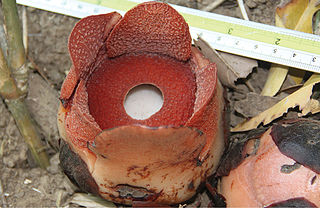
The Old World rats and mice, part of the subfamily Murinae in the family Muridae, comprise at least 519 species. Members of this subfamily are called murines. In terms of species richness, this subfamily is larger than all mammal families except the Cricetidae and Muridae, and is larger than all mammal orders except the bats and the remainder of the rodents.

The genus Chrotomys contain a unique group of rodents found only in the Philippines, specifically the islands of Luzon, Mindoro, and Sibuyan. Instead of being predominantly herbivorous or omnivorous like other murines, these rats feed predominantly on invertebrates although they do eat some vegetable matter. This vermivory is probably the result of a rat-like animal moving into an ecological niche usually filled by shrews. Shrews and other insectivores are absent on these Philippine islands.

Apomys, commonly known as earthworm mice, is a genus of rodent endemic to the Philippines. Mice belonging to this genus are generally called Philippine forest mice and can be found on most islands of the Philippines except in Palawan, the Sulu Archipelago, and the Batanes and Babuyan group of islands.

The cloud rats or cloudrunners are a tribe (Phloeomyini) of arboreal and nocturnal herbivorous rodents endemic to the cloud forests of the Philippines. They belong to the family Muridae and include five genera: Batomys, Carpomys, Crateromys, Musseromys, and Phloeomys. They range in size from as large as 50 cm (20 in) to as small as 74 mm (2.9 in). Cloud rats are threatened by habitat loss and illegal hunting. Several species are endangered or critically endangered.

The shrewlike rats, genus Rhynchomys, also known as the tweezer-beaked rats are a group of unusual Old World rats found only on the island of Luzon in the Philippines. They look a great deal like shrews and are an example of convergent evolution. Shrewlike rats evolved to be vermivores and insectivores feeding on soft-bodied invertebrates associated with leaf litter.

The northern Luzon giant cloud rat or northern Luzon slender-tailed cloud rat, also known as bu-ot in Filipino, is a large species of rodent in the family Muridae. It is only found in Luzon, the Philippines.

The Luzon fruit bat is a species of megabat in the family Pteropodidae. It is the only species within the genus Otopteropus and is endemic to the Philippines. Its natural habitat is subtropical or tropical dry forest.

The small rufous horseshoe bat is a species of bat in the family Rhinolophidae. It is endemic to the Philippines on the island of Camiguin, Catanduanes, Luzon, Mindanao and Mindoro at elevations from sea level to 1,000m.

The Sierra Madre shrew mouse is a species of mammal from the Philippines.

The Katanglad shrew-mouse, also known as the Kitanglad shrew-mouse is a species of rodent in the family Muridae. It is known only from one specimen taken at 2250 m on Mount Kitanglad, Bukidnon Province, Philippines.

The Kalinga shrew mouse is a rodent of the genus Soricomys found in the northern province of Kalinga, island of Luzon, in the northern Philippines.

The Banahao shrew-rat is a species of rodent in the genus Rhynchomys. It was described in 2007.

The Tapulao shrew-rat is a rodent in the subfamily Murinae. It was described in 2007.

Rafflesia consueloae is a parasitic plant species of the genus Rafflesia endemic to the island of Luzon in the Philippines. It is the smallest species of the genus Rafflesia.

Parvoscincus leucospilos, the white-spotted sphenomorphus, is a species of skink endemic to the Philippines. It is found between 300 and 1,200 m above sea levels in the forests of central and southern Sierra Madre Mountain Range of Luzon Island. This skink hides under rocks or in debris in the banks of streams and rivers. When threatened by predators, such as snakes, it may dive and stay under water for a long time.

Soricomys, the shrew-mice, are a genus of rodents in the family Muridae. They are carnivores that feed on invertebrates much like shrews do. An apparently smaller relatives of the true shrew-rats Chrotomys and Rhynchomys, Soricomys are somewhat convergent to the more distantly related Crunomys.
Danilo S. Balete, also known as Danny Balete, was a Filipino zoologist and biologist. His is known for his work on the Philippines' endemic mammal species. He pursued the question of what determines species diversity. The research by Balete and his team overturned previously held notions that diversity decreased in mountainous regions, showing that harsh environments could generate, rather than suppress, species diversity.
The Aurora mountain skink is a species of lizard in the family Scincidae. The species is endemic to the Philippines.
The Kampalili shrew-mouse or the Kampalili baletemys is a species of rodent in the family Muridae. It is the only species in the genus Baletemys. It is found only on Mount Kampalili, in the highlands of eastern Mindanao, in the Philippines.
The large Cordillera shrew-mouse is a species of rodent in the family Muridae found only in the Philippines.














